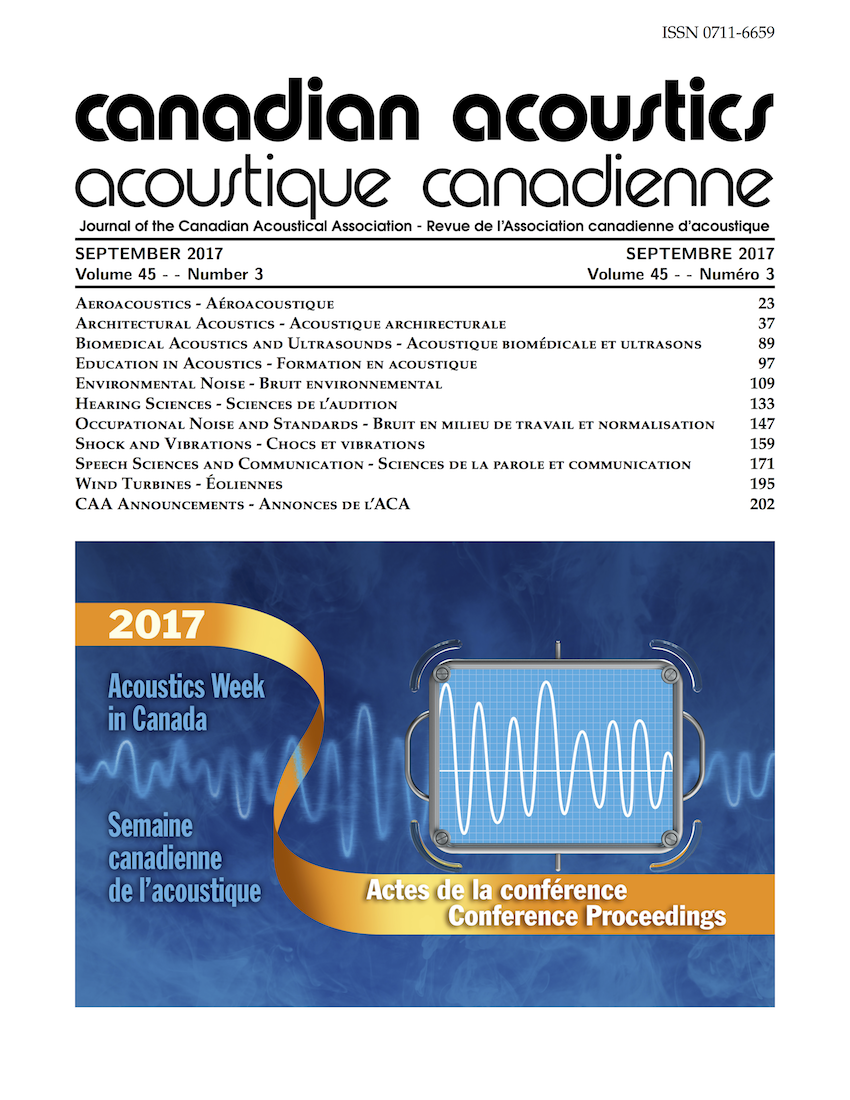Loudness in the occluded ear canal: are we again missing 6 dB?
Abstract
Over the last century, a large number of studies were reported as related to the "case of the missing 6 dB". Initially, this research dealt with the loudness comparison between noise induced by circumaural headphones versus that induced by a free-field loudspeaker. It was said headphones had to generate more sound pressure in the ear canal to equal the loudness that a loudspeaker would provide. Some recent work has since provided several explanations for this observed discrepancy. Three main changing parameters were identified to describe this large amount of data that may or may not have been influenced by the same factors: nature of the source (loudspeaker, headphones, in-ear monitors), characteristics of the sound stimuli (spectral and temporal features, excitation level), and the mechanical load applied to the external ear (ear covered with earcups, occluded ear, fully open ear). In this paper, we intend to combine the thoughts of several decades of research and help providing the full picture on this issue for the occluded ear case. Based on our own experimental measurements and those from other inquisitive studies, focus was made on the factors that should be regarded as most likely to explain the observed differences for the occluded ear to perceive the same loudness as the open ear.
Additional Files
Published
How to Cite
Issue
Section
License
Author Licensing Addendum
This Licensing Addendum ("Addendum") is entered into between the undersigned Author(s) and Canadian Acoustics journal published by the Canadian Acoustical Association (hereinafter referred to as the "Publisher"). The Author(s) and the Publisher agree as follows:
-
Retained Rights: The Author(s) retain(s) the following rights:
- The right to reproduce, distribute, and publicly display the Work on the Author's personal website or the website of the Author's institution.
- The right to use the Work in the Author's teaching activities and presentations.
- The right to include the Work in a compilation for the Author's personal use, not for sale.
-
Grant of License: The Author(s) grant(s) to the Publisher a worldwide exclusive license to publish, reproduce, distribute, and display the Work in Canadian Acoustics and any other formats and media deemed appropriate by the Publisher.
-
Attribution: The Publisher agrees to include proper attribution to the Author(s) in all publications and reproductions of the Work.
-
No Conflict: This Addendum is intended to be in harmony with, and not in conflict with, the terms and conditions of the original agreement entered into between the Author(s) and the Publisher.
-
Copyright Clause: Copyright on articles is held by the Author(s). The corresponding Author has the right to grant on behalf of all Authors and does grant on behalf of all Authors, a worldwide exclusive license to the Publisher and its licensees in perpetuity, in all forms, formats, and media (whether known now or created in the future), including but not limited to the rights to publish, reproduce, distribute, display, store, translate, create adaptations, reprints, include within collections, and create summaries, extracts, and/or abstracts of the Contribution.


